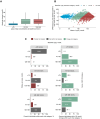Within-person stability of lipoprotein(a) concentration
- PMID: 39375838
- PMCID: PMC11931201
- DOI: 10.1093/eurheartj/ehae652
Within-person stability of lipoprotein(a) concentration
Keywords: Lipoprotein(a); Measurement; Stability; Variability.
Figures

References
-
- Patel AP, Wang (汪敏先) M, Pirruccello JP, Ellinor PT, Ng K, Kathiresan S, et al. Lp(a) (lipoprotein[a]) concentrations and incident atherosclerotic cardiovascular disease: new insights from a large national biobank. Arterioscler Thromb Vasc Biol 2021;41:465–74. 10.1161/ATVBAHA.120.315291 - DOI - PMC - PubMed
LinkOut - more resources
Full Text Sources

